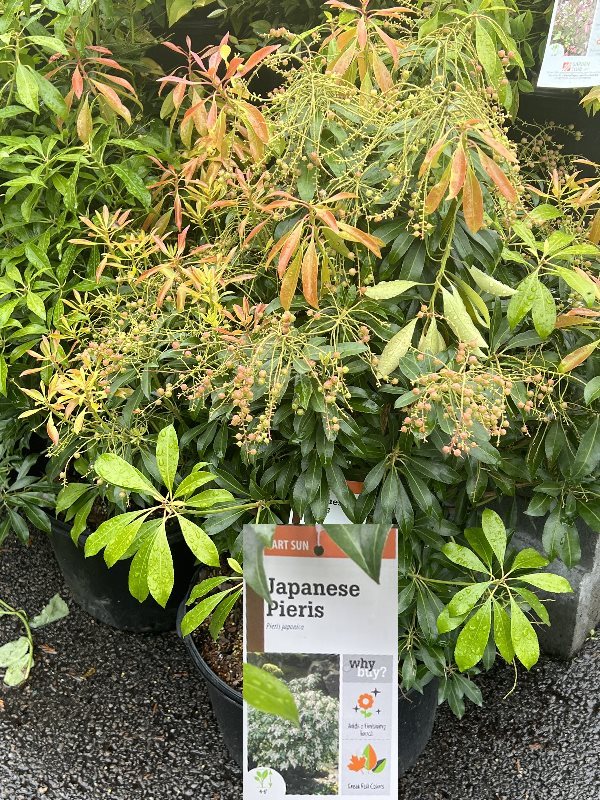
Ashley Davidoff TheCommonVein.net Our Garden
Japanese Pieris, scientifically known as Pieris japonica, is an evergreen shrub native to eastern Asia. It is highly regarded for its attractive foliage, showy flowers, and compact growth habit. Here are some key features and information about the Japanese Pieris:
- Foliage: Japanese Pieris has leathery, glossy, and lance-shaped leaves that emerge as vibrant shades of red or bronze in spring before maturing to dark green. The foliage remains on the plant year-round, providing year-long visual interest.
- Flowers: One of the main attractions of Japanese Pieris is its abundant clusters of bell-shaped flowers that appear in late winter to early spring, typically around March or April. The flowers are pendulous and hang down from the branches. They can be white, pink, or various shades of red, depending on the cultivar.
- Growth Habit and Size: Japanese Pieris typically grows in a dense, rounded or mounded shape. It is a slow-growing shrub that can reach a height of 6 to 12 feet (1.8 to 3.7 meters) with a similar spread, but there are also dwarf varieties available that stay smaller, making them suitable for smaller gardens or containers.
- Cold Hardiness: Japanese Pieris is hardy in USDA hardiness zones 5 to 8, meaning it can tolerate cold temperatures down to -20°F (-29°C). It is well-suited to regions with cool to moderate climates.
- Sun and Soil Requirements: Japanese Pieris thrives in partial shade to full shade conditions. It prefers well-drained, acidic soils with a pH level between 4.5 and 6.0. The soil should be rich in organic matter. If the soil is alkaline, it can lead to chlorosis (yellowing of the leaves), so it’s important to ensure the proper soil conditions.
- Moisture Needs: Japanese Pieris prefers moist soil but can tolerate short periods of drought once established. Regular watering, especially during dry spells, is essential to maintain healthy growth and flowering.
- Companion Planting: Japanese Pieris works well in mixed borders, woodland gardens, or as a specimen plant. It pairs nicely with other shade-loving plants like rhododendrons, azaleas, ferns, and hostas.
- Pruning and Maintenance: Japanese Pieris generally requires minimal pruning. Dead or damaged branches can be removed as needed. Pruning for shape or size control is best done immediately after flowering to avoid removing flower buds that form in late summer.
It’s worth noting that some cultivars of Japanese Pieris are more resistant to lacebugs, which can sometimes be a pest for this plant. If lacebugs are a concern in your area, choosing a cultivar with good resistance is recommended.
Overall, Japanese Pieris is a beautiful, versatile shrub with year-round interest. Its colorful foliage, attractive flowers, and ability to thrive in shade make it a popular choice for gardeners looking to add elegance to their landscapes.
